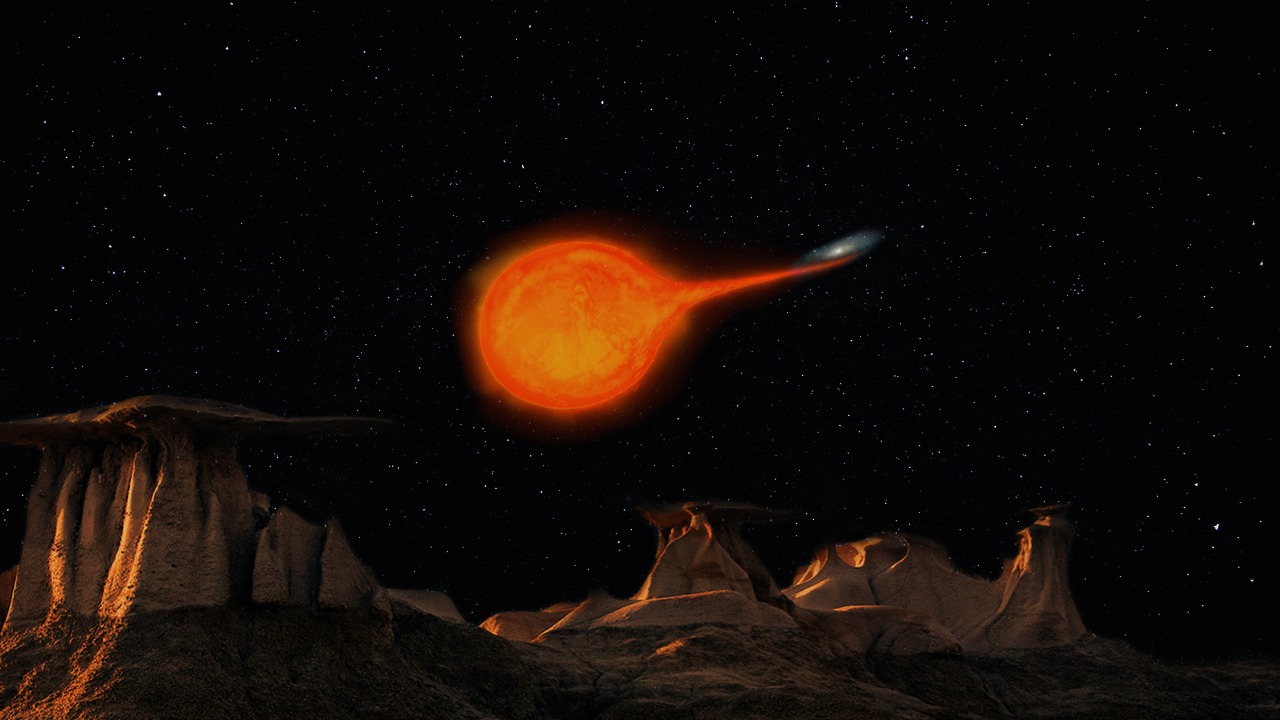Scientists spot alien worlds orbiting exotic star pairs using new technique
The new technique depends on disturbances in the material being fed from one star to another as a third body orbits a binary pair.

A new technique could help astronomers detect exoplanets that orbit exotic binary star systems called cataclysmic variables.
Such systems comprise two stars that orbit each other so closely that the larger body transfers mass to its smaller companion. This material forms a thin, bright accretion disk before falling to the receiving star. But when a third body, like a planet, is orbiting the pair of stars, it can disturb the flow of this material and change the brightness of the disk. The new method of exoplanet detection, developed by a team led by Carlos Chávez, a researcher at the Autonomous University of Nuevo León in Mexico, relies on that disruption.
"Our work has proven that a third body can perturb a cataclysmic variable in such a way that can induce changes in brightness in the system," Chávez said in a statement. "These perturbations can explain both the very long periods that have been observed — between 42 and 265 days — and the amplitude of those changes in brightness."
Related: 10 amazing exoplanet discoveries
Since the first discovery of an exoplanet, or a planet outside the solar system, in the 1990s , thousands of other planets have been found around other stars. However, most of these worlds orbit stars quite similar to the sun or small but active red dwarf stars.
To better understand planetary populations, scientists want methods to detect planets around more exotic stars, like pulsars with their bright beams of light or this type of system, called a cataclysmic variable.
Cataclysmic variables often consist of compact stellar remnants, like super-dense neutron stars or white dwarfs — the kind of hot stellar remnant the sun will leave behind when it runs out of hydrogen and its core collapses in around 5 billion years.
In one common configuration of such systems, a white dwarf star about the size of Earth is joined by a cool red dwarf star, the smallest type of main sequence star (one that is still fusing hydrogen to helium in its core). But these systems aren't called cataclysmic for nothing: In this type of partnership, the white dwarf can siphon material off the red dwarf.
Get the Space.com Newsletter
Breaking space news, the latest updates on rocket launches, skywatching events and more!
As it moves between stars, that material forms an accretion disk that glows brightly, especially compared to typical white and red dwarf stars. But the rate of transfer of this material, and thus the brightness of this accretion disk, can be influenced by a dim third body orbiting the binary pair — a dim body such as an exoplanet. So the researchers used the changes in brightness of four cataclysmic variable systems to estimate the mass of the third body and its distance from the inner stars it orbits.
"Of the four systems we studied, our observations suggest that two of the four have objects of the planetary mass in orbit around them," Chávez said.
The team's findings were published online July 5 in the journal Monthly Notices of the Royal Astronomical Society.
Follow us on Twitter @Spacedotcom and on Facebook.
Join our Space Forums to keep talking space on the latest missions, night sky and more! And if you have a news tip, correction or comment, let us know at: community@space.com.

Robert Lea is a science journalist in the U.K. whose articles have been published in Physics World, New Scientist, Astronomy Magazine, All About Space, Newsweek and ZME Science. He also writes about science communication for Elsevier and the European Journal of Physics. Rob holds a bachelor of science degree in physics and astronomy from the U.K.’s Open University. Follow him on Twitter @sciencef1rst.
